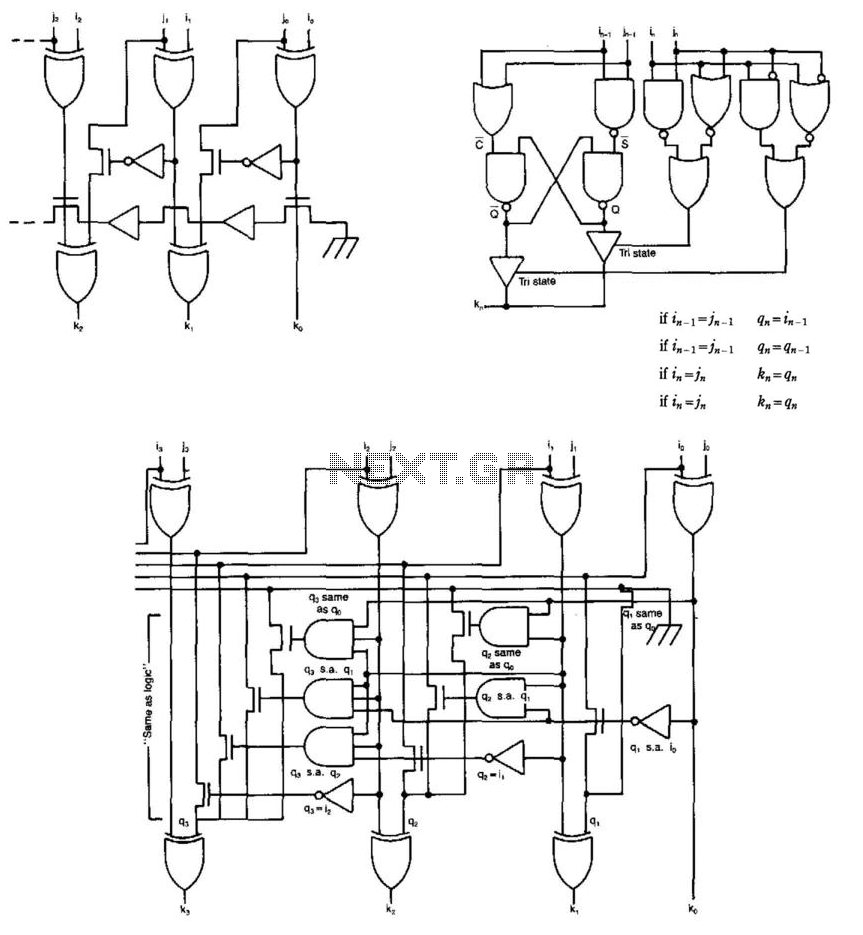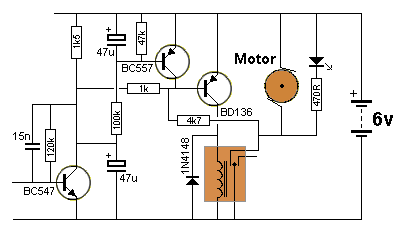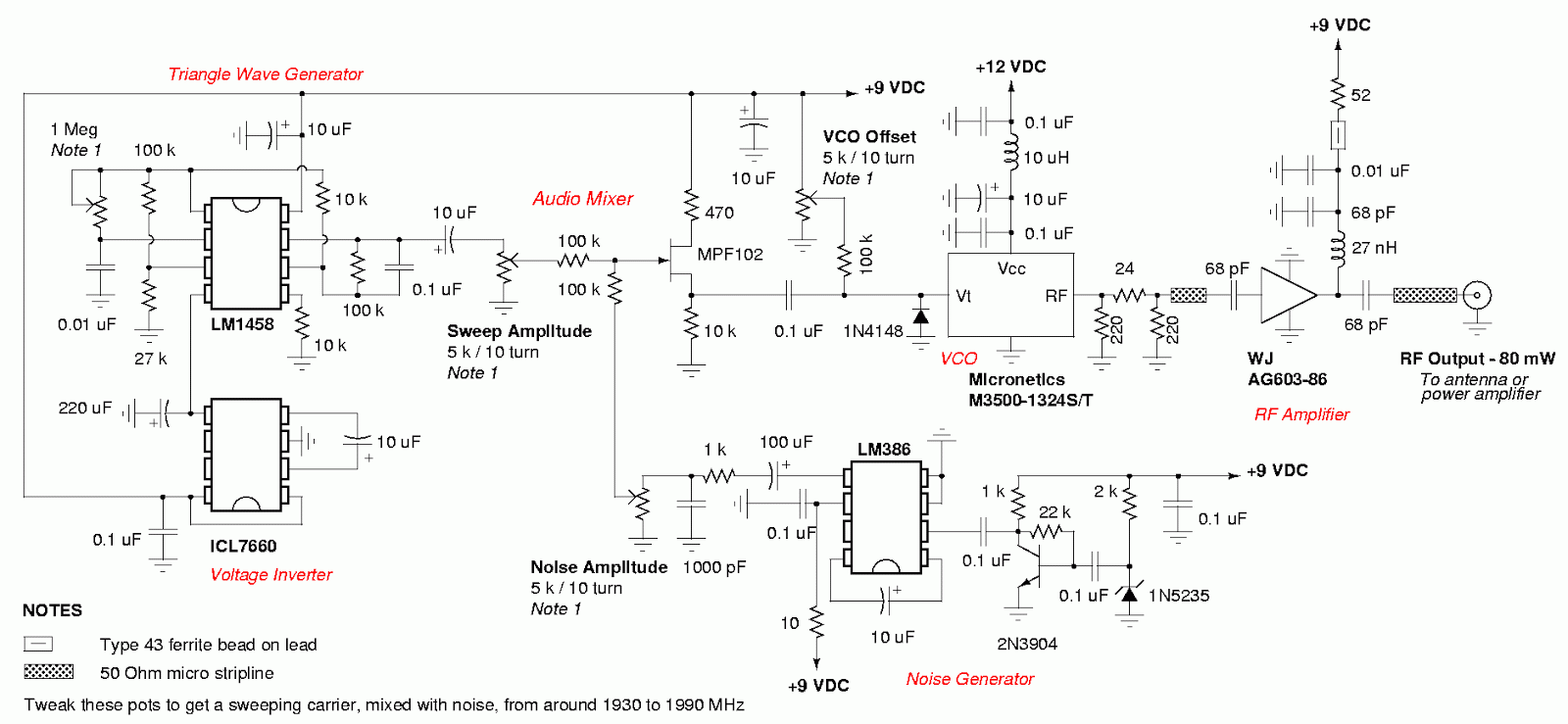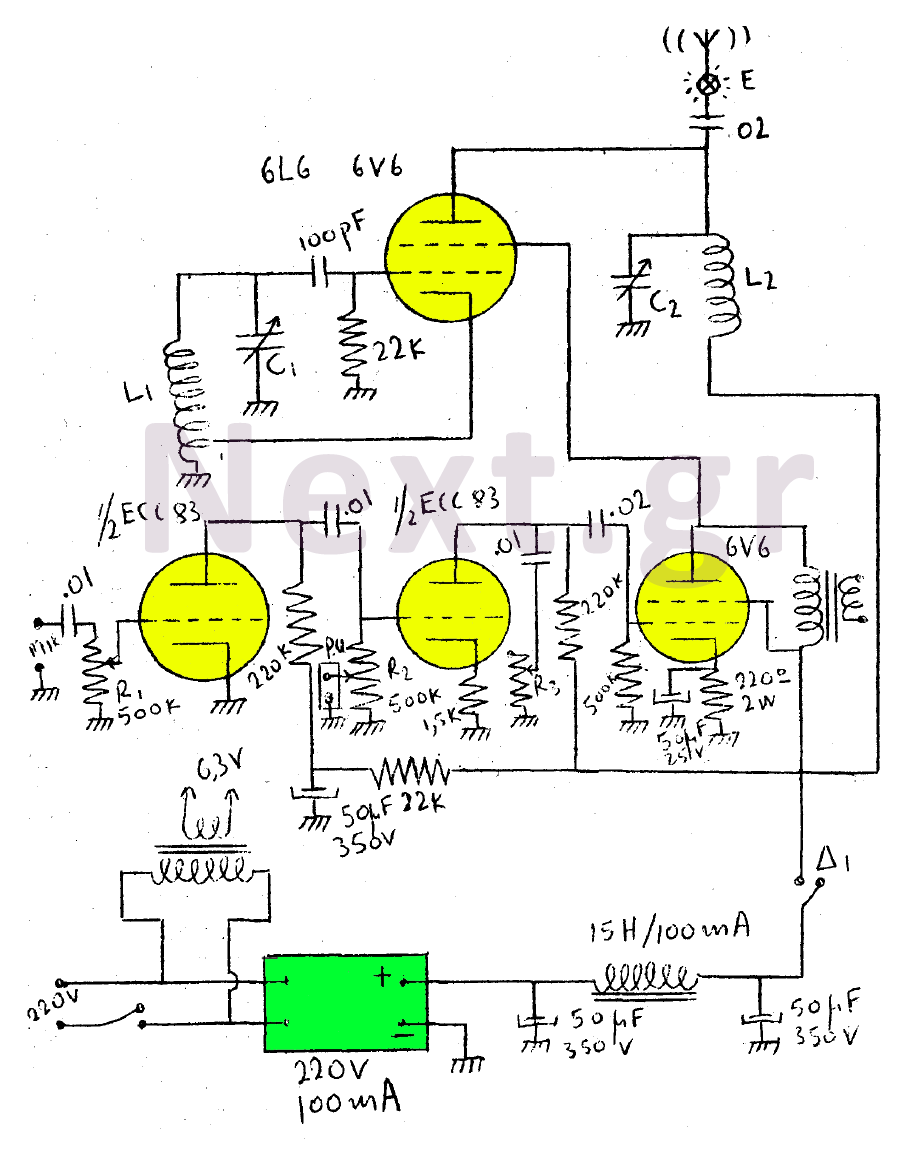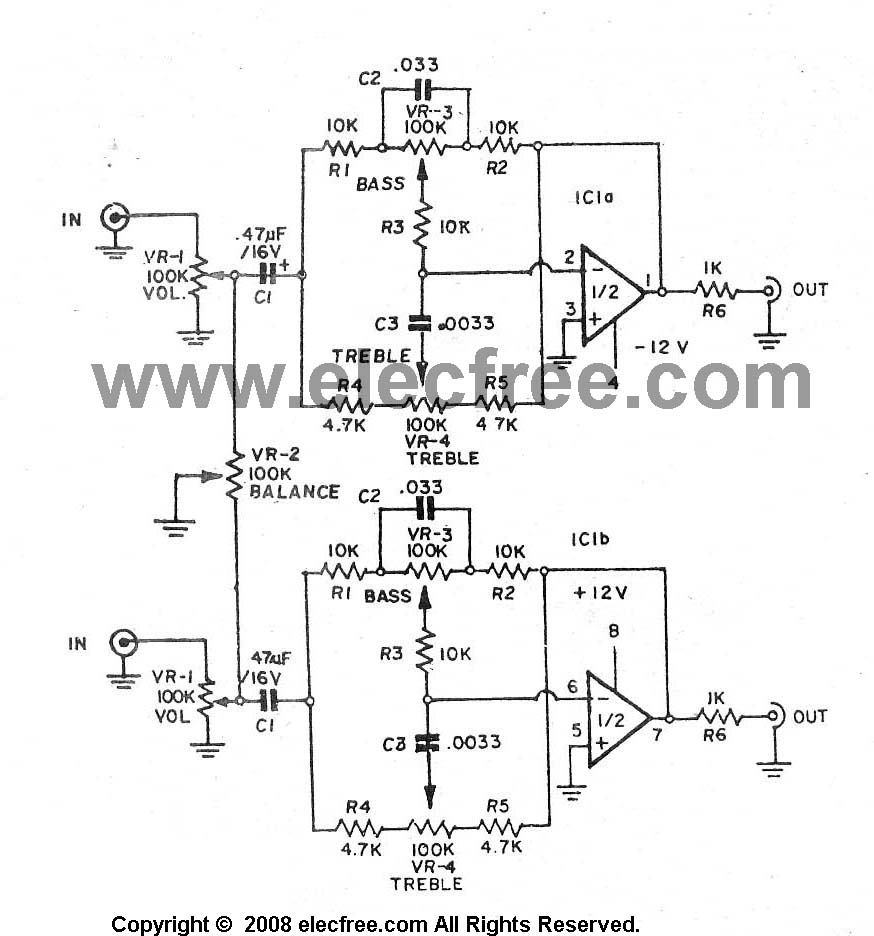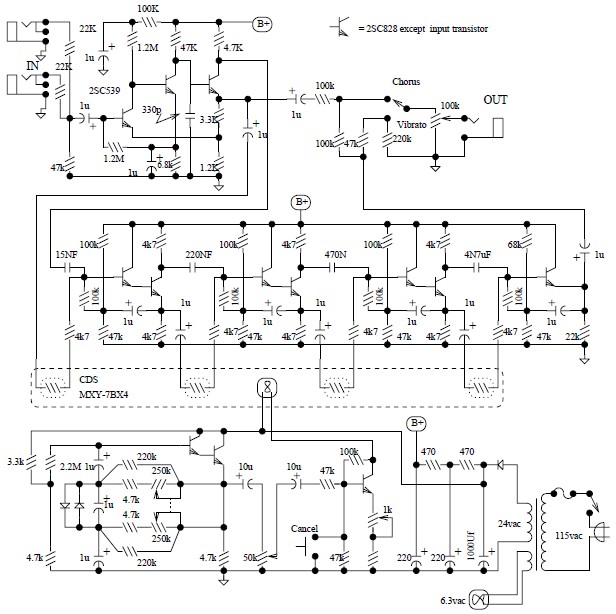
Capacitance Meter Circuit
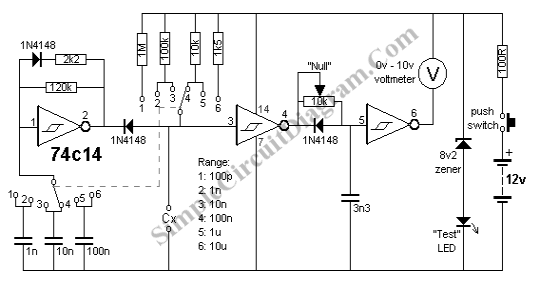
A capacitance meter is an essential instrument for electronics hobbyists and professional electronic technicians.
A capacitance meter is a specialized device designed to measure the capacitance of capacitors in various electronic circuits. It typically features a digital or analog display that indicates the capacitance value in microfarads (µF), nanofarads (nF), or picofarads (pF). The operation of a capacitance meter is based on the principle of charging and discharging a capacitor through a known resistor, allowing the meter to calculate the capacitance based on the time constant of the RC circuit.
In a typical capacitance meter circuit, a microcontroller or dedicated IC is employed to control the measurement process. The circuit includes a power supply, often powered by batteries or an external source, and an input terminal where the capacitor to be tested is connected. The meter may also incorporate a range switch to select different measurement ranges, enhancing its versatility for various capacitor types.
The measurement process begins when the user connects the capacitor to the input terminals. The meter applies a voltage to charge the capacitor and monitors the time it takes for the capacitor to reach a predefined voltage level. This time measurement is then processed by the microcontroller, which calculates the capacitance value using the formula derived from the time constant of the RC circuit.
Advanced capacitance meters may offer additional features such as automatic range selection, tolerance measurement, and the ability to test capacitors in-circuit, which can be particularly useful for troubleshooting electronic devices. Some models may also provide a continuity test function, allowing the user to check for short circuits or open connections in components.
Overall, a capacitance meter is an invaluable tool for anyone working with electronic components, providing accurate measurements that are critical for circuit design, repair, and maintenance.Capacitance meter is one instrument that you should have in your toolbox if you are an electronics hobbyist, or if you`re a professional electronic technician . 🔗 External reference
A capacitance meter is a specialized device designed to measure the capacitance of capacitors in various electronic circuits. It typically features a digital or analog display that indicates the capacitance value in microfarads (µF), nanofarads (nF), or picofarads (pF). The operation of a capacitance meter is based on the principle of charging and discharging a capacitor through a known resistor, allowing the meter to calculate the capacitance based on the time constant of the RC circuit.
In a typical capacitance meter circuit, a microcontroller or dedicated IC is employed to control the measurement process. The circuit includes a power supply, often powered by batteries or an external source, and an input terminal where the capacitor to be tested is connected. The meter may also incorporate a range switch to select different measurement ranges, enhancing its versatility for various capacitor types.
The measurement process begins when the user connects the capacitor to the input terminals. The meter applies a voltage to charge the capacitor and monitors the time it takes for the capacitor to reach a predefined voltage level. This time measurement is then processed by the microcontroller, which calculates the capacitance value using the formula derived from the time constant of the RC circuit.
Advanced capacitance meters may offer additional features such as automatic range selection, tolerance measurement, and the ability to test capacitors in-circuit, which can be particularly useful for troubleshooting electronic devices. Some models may also provide a continuity test function, allowing the user to check for short circuits or open connections in components.
Overall, a capacitance meter is an invaluable tool for anyone working with electronic components, providing accurate measurements that are critical for circuit design, repair, and maintenance.Capacitance meter is one instrument that you should have in your toolbox if you are an electronics hobbyist, or if you`re a professional electronic technician . 🔗 External reference
Warning: include(partials/cookie-banner.php): Failed to open stream: Permission denied in /var/www/html/nextgr/view-circuit.php on line 713
Warning: include(): Failed opening 'partials/cookie-banner.php' for inclusion (include_path='.:/usr/share/php') in /var/www/html/nextgr/view-circuit.php on line 713
